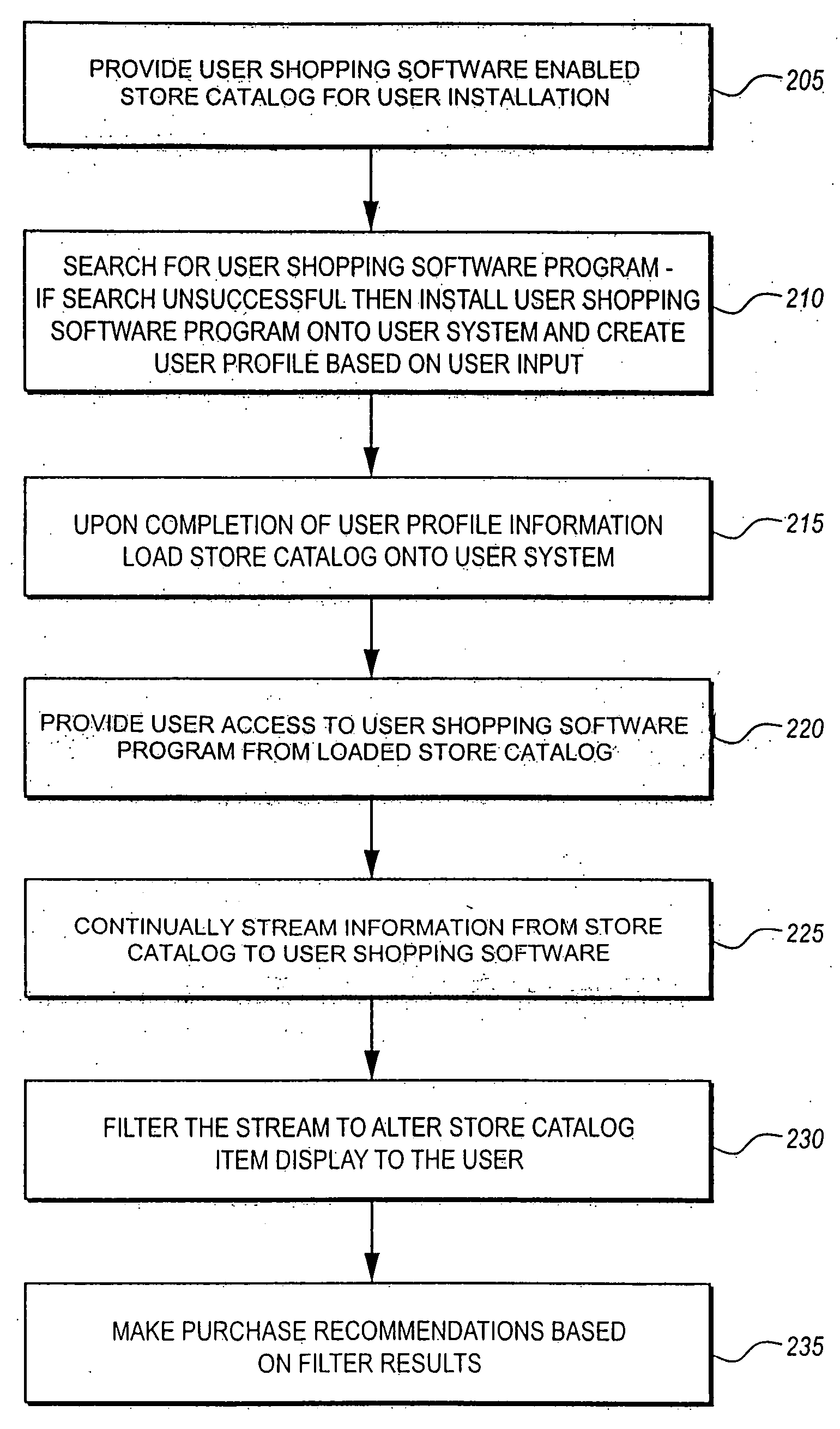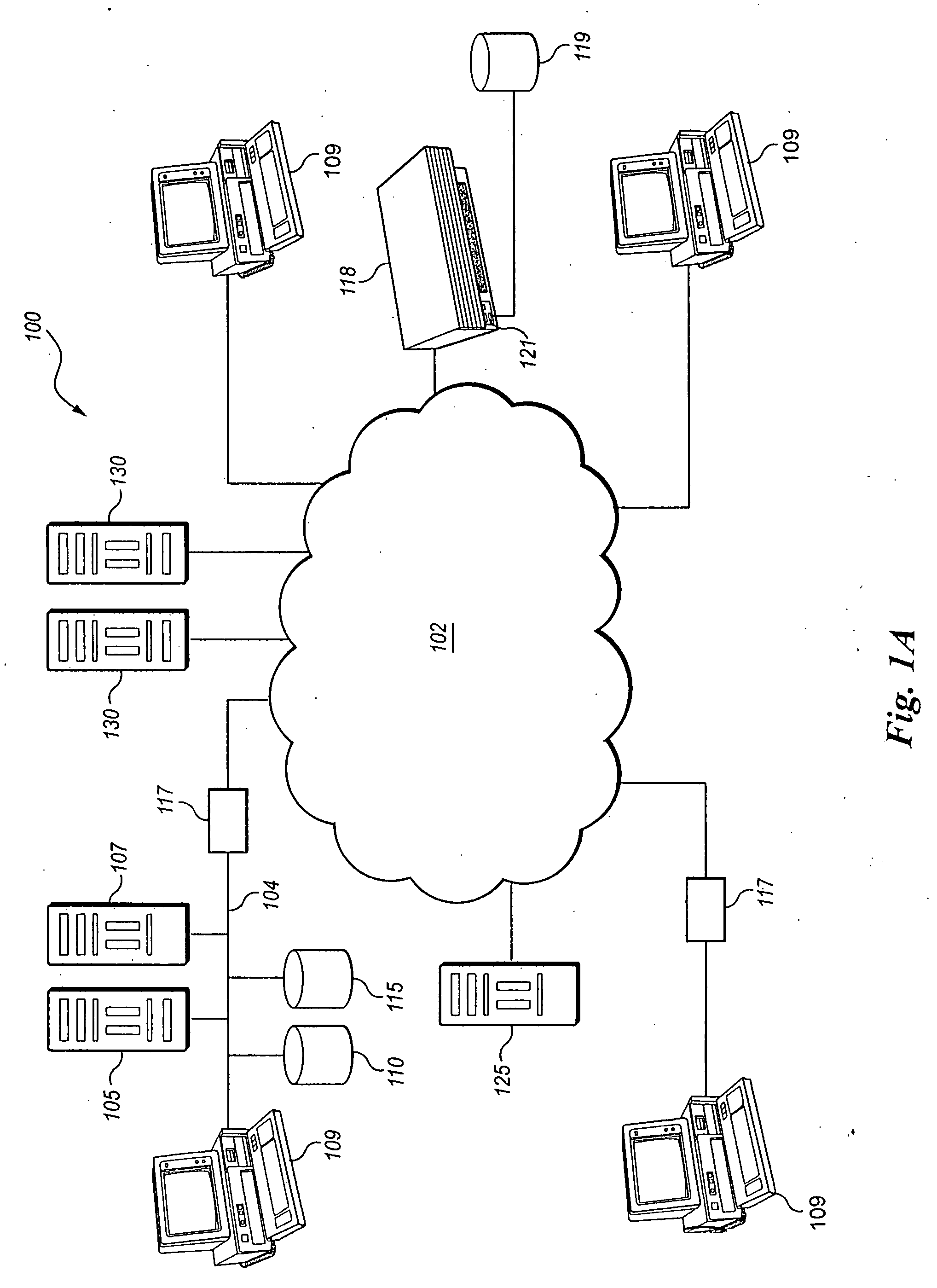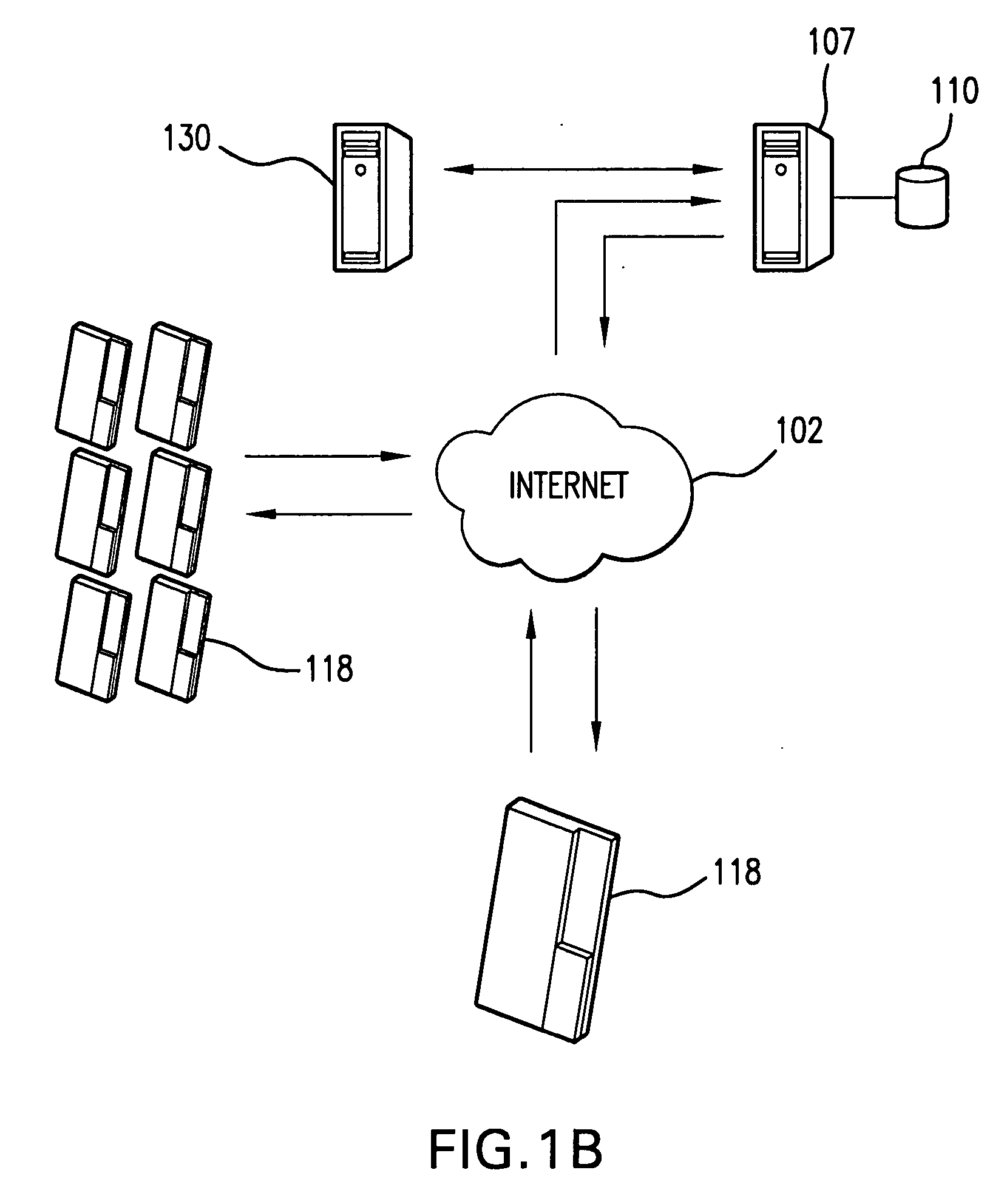Computer implemented shopping system
a shopping system and computer technology, applied in the field of computer implemented shopping system, can solve the problems of inability to efficiently and effectively identify individual consumers (users), system is still unable to consistently predict the individual preferences of a particular user for any given set of objects, and companies waste enormous resources targeting users who have very little, so as to increase the relevancy of any particular object, accurately predict a user's behavior, and increase conversion rate
- Summary
- Abstract
- Description
- Claims
- Application Information
AI Technical Summary
Benefits of technology
Problems solved by technology
Method used
Image
Examples
Embodiment Construction
[0046] Referring to FIGS. 1A and 5, an embodiment of the invention provides a highly interactive presentation in which a user may browse and purchase merchandise and services through a computer implemented system 100 that may have dynamically layered graphical menus. For example, graphical menus may be structured according to conceptual groupings based on predetermined event sequences. Those predetermined event sequences can be frames that incorporate media objects. Media objects are, for example, video clips or digital animation. The video digital animation, in turn, may contain shopping objects. Shopping objects are products or services that a shopper may purchase through the hypermedia environment.
[0047] Referring to FIGS. 1B and 6, according to one embodiment of the invention, a user may install a store or catalog to the console hard drive via portable storage device or download it from application server 105. Software will automatically search for the matrix program on the use...
PUM
 Login to View More
Login to View More Abstract
Description
Claims
Application Information
 Login to View More
Login to View More - R&D
- Intellectual Property
- Life Sciences
- Materials
- Tech Scout
- Unparalleled Data Quality
- Higher Quality Content
- 60% Fewer Hallucinations
Browse by: Latest US Patents, China's latest patents, Technical Efficacy Thesaurus, Application Domain, Technology Topic, Popular Technical Reports.
© 2025 PatSnap. All rights reserved.Legal|Privacy policy|Modern Slavery Act Transparency Statement|Sitemap|About US| Contact US: help@patsnap.com



